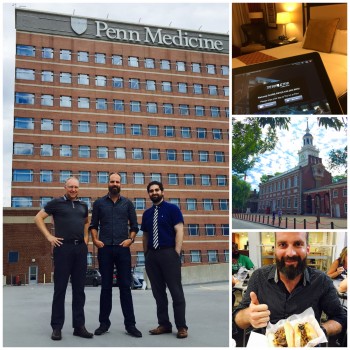Continuing the new ESA-sponsored medical doctor’s blog entries on preparing for his year-long stay in Antarctica, Floris van den Berg writes:
It was actually my hotel that welcomed me, but still, visiting an Ivy League university is pretty cool. My second training for Concordia research station was at the University of Pennsylvania in Chicago. After catching up with old friends in New York City, I was welcomed by Dr. Mathias Basner and his research team.
What happens to the brain when you get locked up in a confined space with a small group of people for a full year? Close the oxygen tank a bit and turn off the lights for a while and see what happens?
Antarctica can be quite extreme, we will live in isolation with no evacuation options for 9 months, breathe 30% less oxygen compared to sea level and see no sun for up to 4 months. With the Neuroscience study I will use structural and functional neuroimaging (MRI-scans) pre- and post isolation to see if there are changes in both the stucture and function of the brain. This research is a collaboration with the American space agency NASA where we will assess cognitive performance with a cognition test, our control group are the astronauts on the International Space Station!
To investigate changes in sleep duration, sleep-wake rhythms and light exposure we will continuously wear wrist actigraphy watches during our period of confinement and isolation. Besides the time, the watches also show how active we are, at which time, and where… Big Brother is watching!
Every month we will have 24-h ECG measurements to investigate physiological changes in heart rate, heart rate variability, and sleep structure. The final part of the research is about the changes in motor skills and the effects of isolation on our mood, depression, stress, and conflicts among crewmembers. Enough options to ‘cool down’ in Antarctica, so I guess the latter should be fine…
Head researchers I met:
Mathias Basner (PENN) & Bernd Johannes (DLR)
Official research title:
Neurostructural, Cognitive, and Physiologic Changes During a 1-year Antarctic Winter-Over Mission.





Discussion: no comments